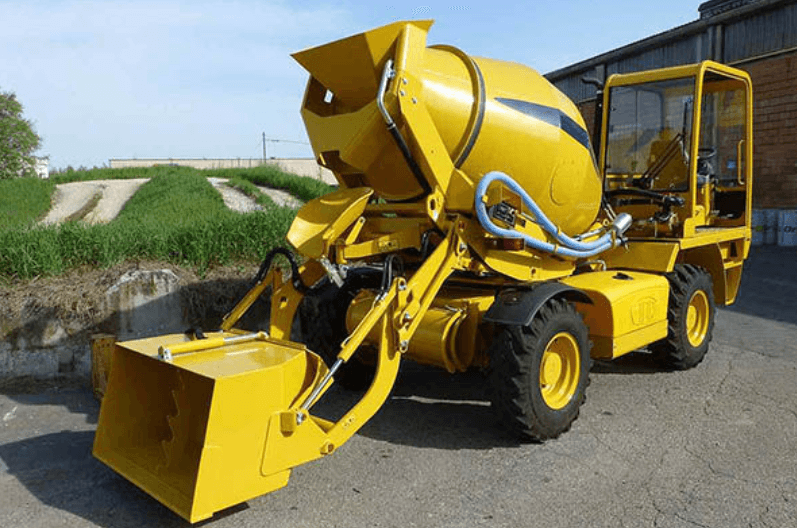
Why the self loading concrete mixer is Transforming On-Site Construction Practices
In the modern era of construction, efficiency, accuracy, and mobility have become essential elements for success. Whether working on infrastructure, housing projects, or remote developments, contractors are constantly seeking tools that optimize productivity while reducing dependency on labor and logistics. One such machine that has made a remarkable impact in this space is the self loading concrete mixer. Unlike conventional concrete mixers, this innovative equipment is designed to carry out multiple tasks, including loading, mixing, transporting, and discharging concrete—making it a true asset for construction sites of all scales.
What Is a self loading concrete mixer?
A self loading concrete mixer is an advanced piece of machinery that integrates several essential construction functions into a single unit. It is a mobile batching unit equipped with a rotating drum and a hydraulic loading bucket. This versatile equipment is mounted on wheels and comes with a fully functional cabin from where the operator can manage the entire process—from scooping raw materials to delivering the ready-mix concrete.
Designed with off-road capabilities, the machine is especially valuable in terrains where traditional concrete delivery trucks cannot reach. It eliminates the need for separate equipment such as batching plants, loaders, and transit mixers.
See also: Cloud Kitchen: Revolutionizing the Food & Beverage Industry
The Technology Behind the Machine
The self loading concrete mixer is not just about convenience—it’s also a showcase of smart engineering. Key technological features include:
- Precision weighing systems: Advanced models are equipped with digital scales that ensure the right amount of each raw material is used, improving consistency.
- Programmable water dosing: Water content in the mix can be pre-set, enhancing the quality of concrete and eliminating human error.
By combining intelligent design with mobility, this machine supports lean construction methods and reduces idle time on site.
Core Benefits of Using a self loading concrete mixer
1. Improved Productivity
The self-loading nature of the machine reduces downtime. Instead of relying on separate workers to mix and pour concrete, the machine allows a single operator to manage the entire cycle. As a result, the overall time taken for mixing and delivery is significantly reduced.
2. On-Demand Concrete
One of the biggest advantages of the self loading concrete mixer is that it produces concrete on the spot, exactly when it is needed. This eliminates the delays associated with waiting for concrete delivery from batching plants and reduces the risk of setting or wastage before use.
3. Enhanced Portability
The machine’s compact and mobile structure means it can be used in areas that are difficult to access with larger vehicles. This makes it ideal for bridges, tunnels, and mountain road projects where mobility is key.
4. Cost Reduction
Although it may seem like a significant upfront investment, the long-term cost benefits are substantial. Contractors save money on labor, material handling, and transportation. Plus, the durability of the equipment ensures that it offers value over many projects.
5. Eco-Friendly Operation
By batching concrete only as needed and minimizing waste, this mixer contributes to eco-conscious construction practices. Modern models are also compliant with emission standards, reducing the carbon footprint of operations.
Industries Benefiting From self loading concrete mixer Use
The Self Loading Concrete Mixer is not limited to any one sector. Its multifunctional advantages make it ideal for various types of construction work, such as:
- Urban Construction: Ideal for residential buildings, commercial complexes, and municipal developments.
- Rural Infrastructure: Useful for small bridges, rural road construction, and school buildings in remote areas.
- Agricultural Projects: Can be deployed to build farmhouses, water tanks, and dairy sheds.
- Industrial Use: Suitable for factory flooring, equipment bases, and utility installations.
How to Choose the Right self loading concrete mixer for Your Project
The market offers a wide range of models tailored for different project scales and needs. Here are a few key factors to keep in mind when choosing one:
- Capacity: Mixers typically range from 1.2 to 6.5 cubic meters. Choose according to your daily concrete demand.
- Engine Power: Higher horsepower is essential for larger loads and rough terrains.
- Automation Level: More advanced models include GPS tracking, remote diagnostics, and automated batch control.
- Service Availability: Choose a brand that provides reliable after-sales support and easy access to spare parts.
Popular global manufacturers include Daswell, Fiori, Ajax Engineering, and Carmix, all offering various configurations and price ranges to suit specific needs.
Operator Training and Safety
Though operating a self loading concrete mixer may appear simple, proper training is essential to maximize efficiency and ensure safety. Operators must be trained to:
- Load materials accurately.
- Control water dosing using the onboard system.
- Maneuver safely over uneven terrain.
- Maintain the machine regularly.
Many suppliers offer training sessions and operational manuals to assist with onboarding and best practices.
Common Challenges and Their Solutions
While the self loading concrete mixer is highly effective, some challenges can arise if not used properly:
- Incorrect material ratio: Can be addressed by utilizing the onboard weighing and dosing systems.
- Maintenance neglect: Regular servicing is crucial for longevity and performance.
- Overloading: Sticking to manufacturer-specified capacities ensures engine and drum safety.
By taking preventive measures, these issues can be easily avoided, ensuring long-term returns on investment.
Conclusion
In a world where construction timelines are tighter and quality standards are higher, the self loading concrete mixer has emerged as an essential tool for contractors worldwide. It enables faster project completion, cost savings, superior concrete quality, and minimal dependency on external suppliers. Whether you’re working in an urban hub or a remote field location, this machine brings the batching plant right to your site—helping you build smarter, faster, and more efficiently.



